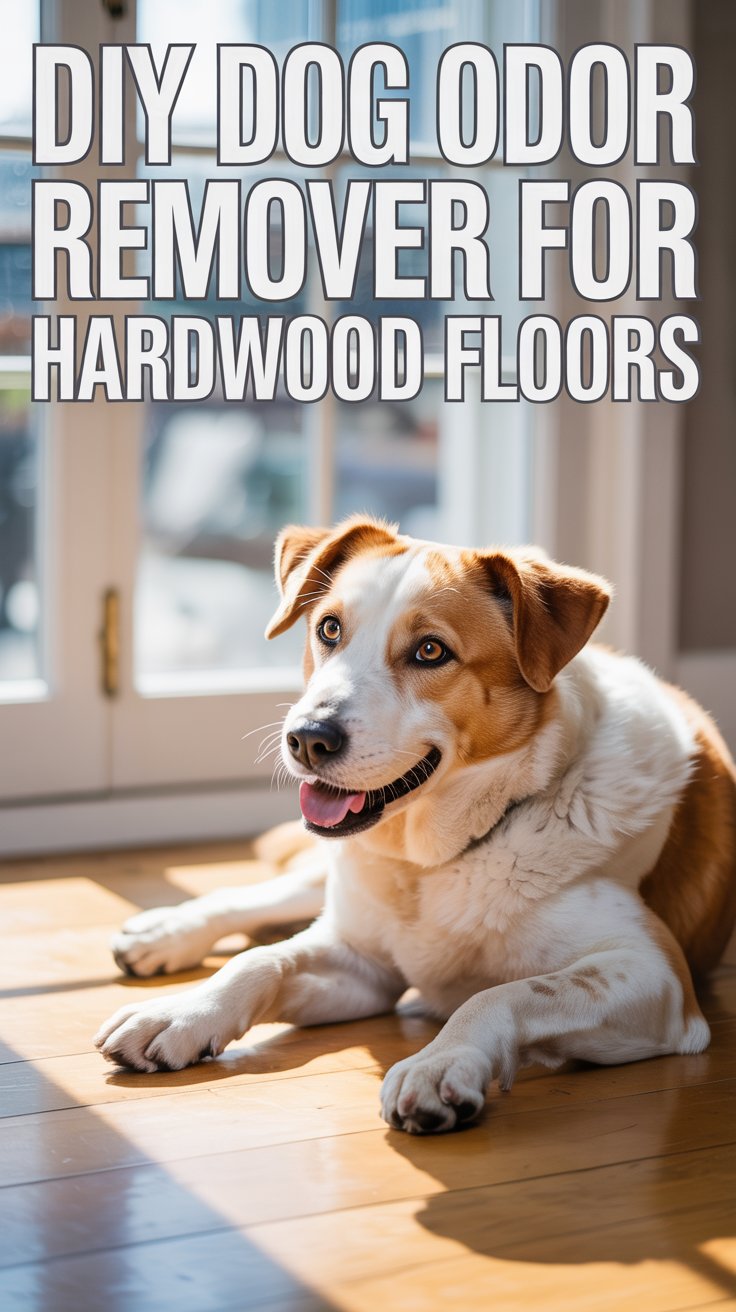Meta Description:
Tired of that lingering dog smell on your hardwood floors? This DIY pet-safe odor remover uses natural ingredients like vinegar and baking soda to eliminate odors, not just mask them. Works on hardwood, laminate, and more!
🐾 Why Does Your Hardwood Floor Smell Like Dog?
Hardwood floors are beautiful—but when you live with dogs, they can act like odor magnets. The porous grain and tiny grooves in the wood trap pet oils, dander, drool, and the occasional “oops” moment. And if you’re not cleaning it properly? That “kennel after rain” vibe lingers.
Here’s what might be going wrong:
- Pet accidents not cleaned immediately
- Residual urine deep in cracks and joints
- Repeated marking due to lingering scent
- Build-up of natural pet oils, dirt, and dander
🧪 Why DIY is Better Than Store-Bought Sprays
Before you grab another chemical-laced “pet deodorizer,” consider this:
❌ Most commercial cleaners:
- Contain ammonia (which actually smells like pee to dogs!)
- Use synthetic fragrances that only mask, not eliminate, odor
- Can damage your hardwood’s finish and integrity
- May cause irritation or toxicity for your pets
✅ DIY natural cleaners:
- Are non-toxic and safe for pets
- Neutralize odors at the source
- Cost pennies per batch
- Help you control exactly what’s used on your floors
🌿 The Ultimate DIY Dog Odor Remover Spray for Hardwood
This powerful, all-natural spray neutralizes dog smells, kills odor-causing bacteria, and is gentle on hardwood finishes.
🧴 What You’ll Need:
- 1 cup distilled white vinegar – neutralizes alkaline pet urine
- 1 cup water – use distilled if your tap water has heavy minerals
- ½ tsp baking soda – absorbs odors and lifts grime
- 5–10 drops of pet-safe essential oil (optional) – for a fresh scent
Try: Lavender, cedarwood, or chamomile
Avoid: Tea tree, citrus, eucalyptus (toxic to dogs)
🧪 How to Mix:
- Pour water and vinegar into a spray bottle.
- Slowly add baking soda (do this over the sink to avoid foam volcanoes).
- Add essential oil if using.
- Shake gently before each use.
Pro Tip: Label your bottle and store it in a cool, dark place.
🧼 How to Use the Spray (Properly)
Hardwood floors require careful cleaning—too much moisture or scrubbing can ruin them. Follow these steps for safe, effective deodorizing:
✅ Step-by-Step:
- Vacuum or sweep first to remove fur, dust, and dander.
- Spot test in a hidden area first—every hardwood finish reacts differently.
- Lightly mist the area—don’t oversaturate!
- Wipe immediately with a dry microfiber cloth or mop.
- Let air dry naturally.
This spray also works on baseboards, litter box areas, or around your dog’s favorite nap spot.
💣 For Heavy Odors: Deep Cleaning Paste
Got a patch that smells like it’s haunted by ghost pee from 2019? Bring out the heavy artillery.
🧴 Deep Deodorizing Paste:
You’ll Need:
- 3 tbsp baking soda
- 1 tbsp water or vinegar
- 1–2 drops pet-safe essential oil (optional)
How to Use:
- Mix into a spreadable paste.
- Rub gently into the smelly area with a soft cloth.
- Let sit 10–15 minutes.
- Wipe clean with a damp cloth.
- Dry thoroughly.
Great for stubborn urine spots, vomit stains, or the dreaded “mystery funk.”
🛑 What NOT to Use on Hardwood Floors
Avoid these common cleaning mistakes that can damage your floors or harm your dog:
| 🚫 Ingredient | ⚠️ Why It’s Bad |
|---|---|
| Bleach | Corrosive, strips finish |
| Hydrogen peroxide | May discolor wood |
| Ammonia | Smells like pee to dogs—may encourage re-marking |
| Citrus oils | Toxic to pets, can damage wood |
| Steam mops | High heat + moisture = warped wood |
🧠 Pro-Level Prevention Tips
Want to stop odors before they start? Add these to your routine:
- 🧼 Clean spills immediately—the faster you act, the less it sinks in.
- 🐾 Use washable rugs with waterproof backings in high-traffic dog zones.
- 🧹 Weekly quick-clean with DIY spray; deep clean monthly.
- 🧴 Seal your wood every 6–12 months to prevent absorption.
- 🐶 Train or re-train marking behavior with positive reinforcement and enzyme neutralizers.
❓ FAQ: Clearing the Air (Literally)
1. Will vinegar make my house smell weird?
Yes—for about 5 minutes. Then it neutralizes other odors and disappears. Add essential oils for a nicer scent.
2. Can I use this on laminate or vinyl?
Yes! Just mist lightly and always test first.
3. Is baking soda safe for pets?
Yes, when used as a cleaner. Don’t let dogs ingest large amounts.
4. My dog keeps peeing in the same spot—why?
Dogs can still smell traces of urine. You need to fully neutralize the area—vinegar + baking soda = your best friend.
5. How often should I clean?
- Light spray: 1–2 times/week
- Deep clean: Every 1–2 months
- High traffic areas: More often if your dog is messy
🌟 Final Thoughts: Keep It Fresh, Keep It Safe
You don’t need harsh chemicals or overpriced sprays to keep your home clean and dog-friendly. With a few basic ingredients from your kitchen, you can tackle tough pet odors naturally, safely, and effectively.
So next time your hardwood smells like Eau de Doggy, grab your spray bottle, do a quick wipe, and breathe in that fresh, non-toxic air.
Your nose—and your floors—will thank you. 🐶✨
Want to go next-level?
Add a wood-safe pet enzyme spray to your arsenal for recurring odor hotspots. It’s the one thing DIY can’t fully replicate—but together, they’re a dream team.
